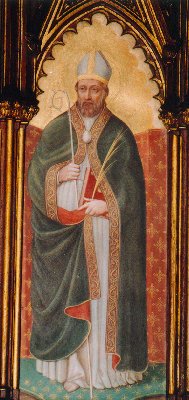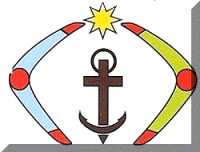Altogether, today there are the following Celtic saints listed on Celtic and old English saints:
St. Erth of Cornwall
St. Foillan of Fosses
St. Bega
St. Erth of Cornwall – Read online
St. Folian of fosses -, Abbot
(Faillan)

Photo taken in 1999 by Jean Leclercq (http://users.skynet.be/leclercq/lr7.htm) – photo source: http://users.skynet.be/leclercq/lr7.htm Transferred from de.wikipedia to Commons. (Original text: http://www.heiligenlexikon.de/Fotos/Foillan.jpg)
Born Ireland
Died seventh century Sonian Forest, Belgium
Venerated in Roman Catholic Church, Eastern Orthodox Church
Feast 31 October (Diocese of Namur); 5 November (Dioceses of Mechelen and Tournai)
Attributes Represented with a crown at his feet to show that he despised the honours of the world
Patronage Fosses; truss-makers, dentists, surgeons, and children’s nurses.
- Born in Ireland and died in Belgium around the year 655. Foillan and Saint Ultan (f.d. May 1) were among the brothers of Saint Fursey (f.d. January 16), who travelled to England with Fursey around 630. They established a monastery at Burgh Castle in Suffolk, near Yarmouth, and served as missionary monks among the East Angles under him.
When Fursey left for Gaul, Foillan succeeded him as abbot, but the ruin of their monaste ry, as well as the Mercian depredations under Penda, prompted Foillan and Ultan to follow their brother over the sea.
King Clovis II welcomed them to Neustria. Blessed Ida of Nivelles (f.d. May 8) donated Foillan land in Fosses, Belgium, where he established a monastery and institute. [ ]https://celticsaints.org/2021/1031b.html
Second Life
Foillan was one of several Irish missionaries who evangelised in Europe during the seventh century, bringing the liturgy and sacred vessels, establishing successful monasteries, and contributing significantly to the spread of the Faith in these areas. Foillan was an important figure in Frankish ecclesiastical history, as evidenced by his participation in the direction of Nivelles and the establishment of the Monastery of Fosses-la-Ville.
Foillan was born in Ireland in the early 7th century and was the brother of Saints Ultan and Fursey, the latter of whom was a notable Missionary who proclaimed the Faith to the Irish, Anglo-Saxons, and Franks. When his brother Fursey fled from his country, which had been devastated by foreign invaders, he travelled with his brother Foillan, who was probably accompanied by Ultan. Between 634 and 650, Fursey travelled among the Anglo Saxons and established a Monastery at Burgh Castle (Cnoberesburg) in Suffolk.
Fursey left the Monastery in the care of Foillan, who remained at the head of the community and had the happiness of seeing his brother Fursey, who had subsequently gone to the kingdom of the Franks and came to see him around 650. Soon after, a devastating conflict erupted between Penda, the Mercian Chief, and Ana, the King of the Eastern Anglo-Saxons. After Ana was driven away, the Monastery of Cnoberesburg fell into the hands of the enemy. It was ransacked, and the abbot, Foillan, narrowly escaped death.[ ] https://anastpaul.com/2021/10/31/saint-of-the-day-31-october-st-foillan-of-fosses-died-655/
St. Bega, Anchoress of St. Bee’s Head Cumberland, Founder of a Monastery Near Whitehaven, Virgin (Bee, Begh, Begha, Begu)

Doug Sim, CC BY-SA 3.0 https://creativecommons.org/licenses/by-sa/3.0, via Wikimedia Commons
In 681, she died in Cumberland. This is another of those difficult saints, combining fact and fiction and possibly the legends of multiple people with the same name. The first Bega is Irish, while the second is Anglo-Saxon. There appears to be some substance for the stories, as there always is, but it is impossible to classify or discern to whom each aspect of the story pertains. So here’s what each of the sources has to say.
Saint Bega, an Irish girl and princess in legend, fled on the night of her marriage to a son of the King of Norway with a miracle bracelet provided by an angel as a mark of her betrothal to the Lord Jesus Christ. She was mysteriously transported to Cumberland, England, over the Irish Sea.
THE FLIGHT FROM IRELAND
The life of St. Bega
The account of Bega’s flight from Ireland is found in the Life of St Bega,part of a collection of various English saints’ lives that belonged to Holmcultram Abbey and is dated to the mid-13th century. The Life continues:Bega found the place covered with a thick forest, admirably adapted for a solitary life. Wishing to dedicate her life to God she built for herself a virgin cell in a grove near the seashore, where she remained for many years in strict seclusion. In the course of time the district began to be frequented by pirates. The good saint however dreaded not death, nor mutilation, nor the loss of temporal goods, of which she was destitute except her bracelet (armilla), but she feared the loss of her virginity, the most precious treasure with which heaven can endow her sex. By divine command Bega hastened her departure from the place, but she was induced to leave her bracelet behind her, that miracles in ages to come might be performed in that neighbourhood in testimony of her holy life.
https://en.wikipedia.org/wiki/Saint_Bega
Victoria County History, Cumberland, ed. J. Wilson
She lived as a hermit for a period before receiving the veil from Saint Aidan of Lindisfarne on the counsel of King Saint Oswald (f.d. August 9). (f.d. August 31). Following that, she established a convent on the promontory of Saint Bee’s Head (Copeland), Cumberland, which survived for 900 years thanks to endowments from Kings Saint Oswald, Saint Oswin (f.d. August 20), and others. She was revered as an abbess for her assistance to the destitute and oppressed. The abbey, as well as the community of Kilbees in Scotland, bear her name in perpetuity.
Other saints with the same name have been named by hagiographers in Yorkshire and an abbess at Kilbees. Saint Aidan also professed an Anglo-Saxon nun named Heiu or Begu. She abdicated her abbacy of Hartlepool Abbey in favour of the royal princess Saint Hilda, according to Saint Bede (f.d. May 25). (f.d. November 17). He further adds that while Begu was a novice mistress in another convent, she saw a vision of her beloved Hilda ascending to heaven surrounded by celestial light as the bells tolled to call the sisters to prayer. The congregation quickly met in the chapel to pray for Hilda’s soul’s repose. The following morning, couriers brought word of the death of the abbess of Whitby..[ ]https://celticsaints.org/2021/1031c.html
Also read the Orthodox entry at https://orthochristian.com/82258.html

